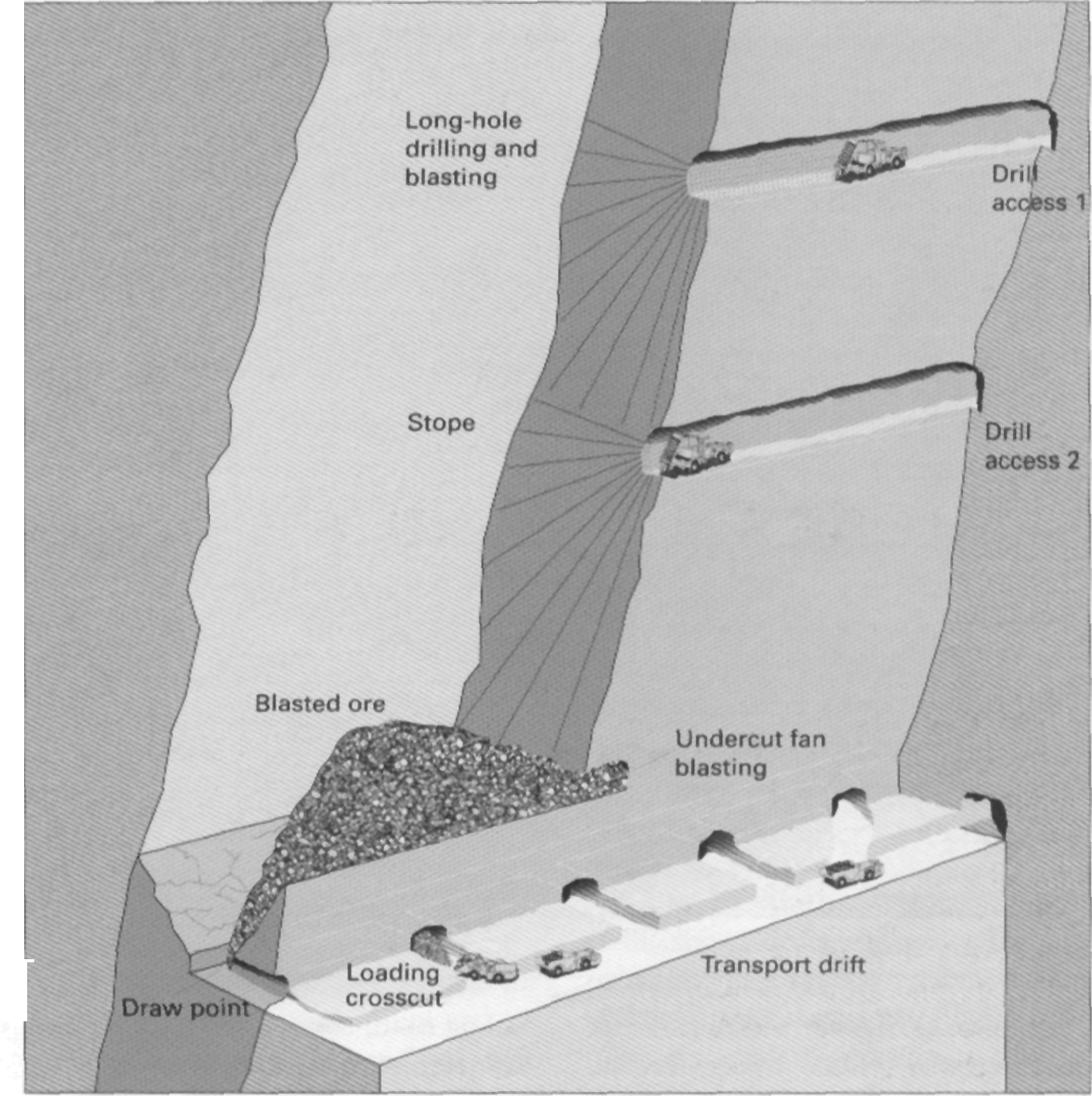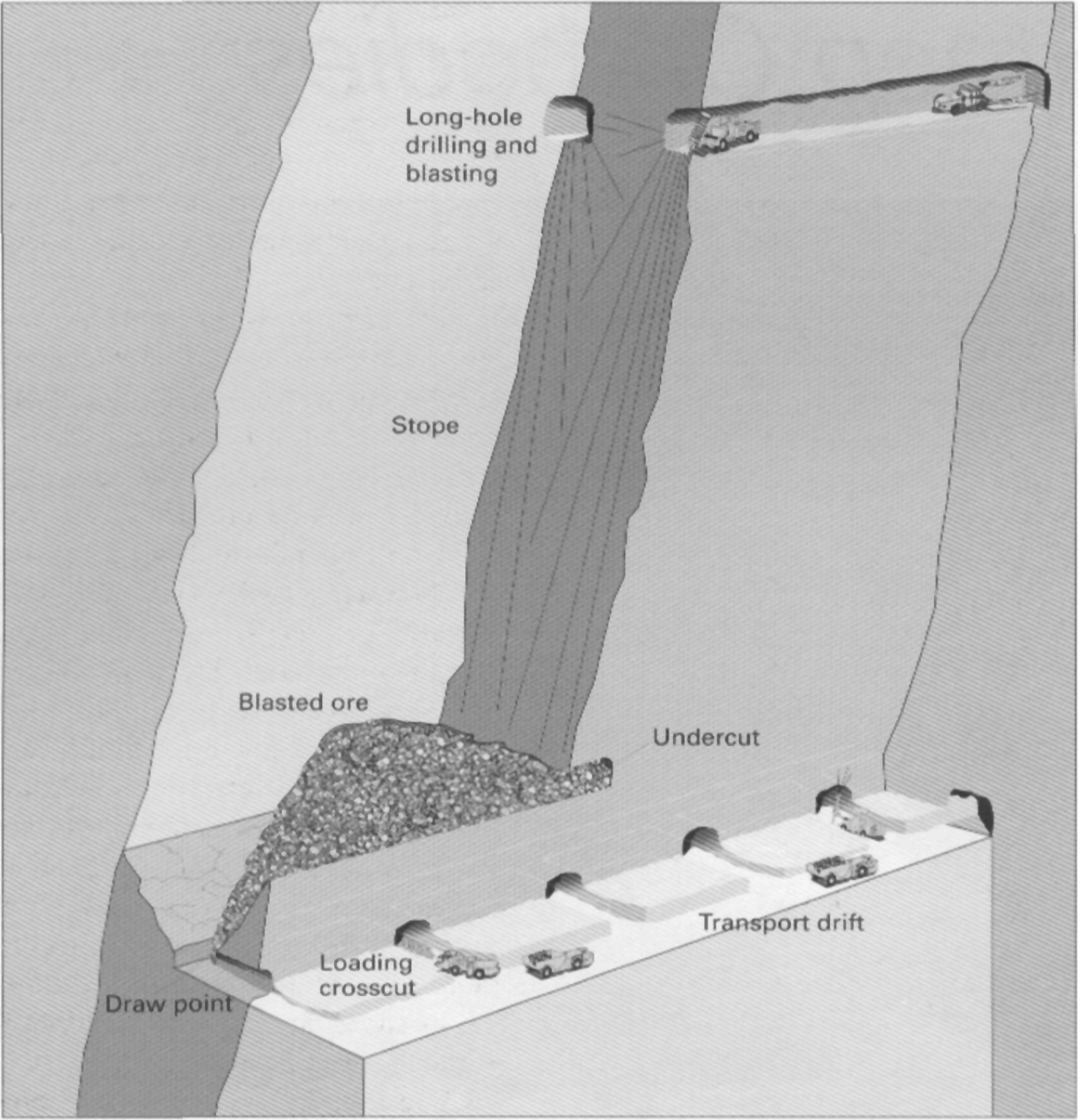
- •2007 Р.
- •3) Match a word in column
- •Rock Excavation in civil Engineering
- •Introduction to Remote Control Technology
- •Supplementary reading:
- •Introduction
- •Versatile Drillrig
- •Multiple Tasking in Western Australia
- •Improving Productivity
- •Exercises:
- •4) Give answers to the following questions:
- •Exercises:
- •1)Give Ukrainian equivalents of the following words and word combinations:
- •2) Give English equivalents of the following words and word combinations:
- •3)Fill the blanks with the necessary words and word combinations:
- •4) Quote the sentences in which these words and word combinations are used. Translate these sentences into Ukrainian:
- •5.Give answers to the following questions:
- •6. Tell what you know about:
- •Importance of Geology
- •Igneous Rocks
- •Investigation and Exploration
- •Exercises:
- •1) Give Ukrainian equivalents of the following words and word combinations:
- •4) Quote the sentences in which these words and word combinations are used:
- •5) Give answers to the following questions:
- •Exercises:
- •2) Give English equivalents of the following words and word combinations:
- •4) Quote the sentences in which these words and word combinations are used:
- •5) Answer the following questions:
- •6) Tell what you know about:
- •Vertical Crater Retreat
- •Exercises:
- •1) Give Ukrainian equivalents of the following words and word combinations:
- •2) Give English equivalents of the following words and word combinations:
- •3) Fill the blanks with the necessary words:
- •4) Quote the sentences in which these words and word combinations are used:
- •5) Answer the fallowing questions:
- •6) Tell what you know about:
- •Supplementary reading
- •Список використаної літератури:
- •«Наукова англійська мова»
Exercises:
Give Ukrainian equivalents of the following words and word combinations:
To be exposed to falling objects, a circular cross-section, distribution of rock pressure, reinforcement, drilling and charging pattern, drilling and blasting methods, emulsion, explosives and dynamites, a boom, full face boring
2) Give English equivalents of the following words and word combinations:
швидкість просування, вертикальне буріння, підйомний ствол ,ствол шахти, відхилення, скат (схил), транспортування зруйнованоі породи самопливом,ініціювання вибуху, відкотний горизонт
Fill the blanks with the necessary words:
drill-ring, sink shaft, pattern, fragmented, water-resistant.
1. … are passageways sunk from the surface downwards or underground from one level to another.
2. The blasted rock must be well …, to suit the excavation equipment.
3. The drilling and charging … is similar to that of similar surface blasts.
4. The drilling is done with … which comprises a circular I-beam to which the machines are fixed.
5. The explosives used in shaft sinking must be very …
4) Quote the sentences in which these words and word combinations are used:
to be expose to, risky blasting jobs, to be well fragmented, the burden and spacing, emulsion explosives, specific charge, to minimize overbreak, remote control, primary reinforcement.
5) Answer the following questions:
1) What is a sink shaft and for what purposes is it sunk?
2) Why is shaft sinking one of the most difficult and risky blasting jobs?
3) What does the design of the cross section depend on?
4) Which are the most common drilling and blasting methods in shaft sinking?
5) What explosives are preferred in shaft sinking?
6) What techniques (methods) are used in shaft sinking?
6) Tell what you know about:
1) Shafts and sinking shafts as a whole.
2) Explosives used in shaft sinking.
3) Parallel hole drilling.
4) Full face boring of shafts.
5) About lift cage raising.
Mining in Steep Orebodies
Based on Gravity
The dimensions of mineral deposits vary greatly, from massive formations stretching over several square kilometres, to half metre-wide quartz veins containing some 20 gm/t gold.
In recovering the minerals, the miners prefer to leave hanging-wall and footwall waste rock intact. In the larger deposits, machines can operate in the drifts without problems. When the mineralization narrows to a few metres only, it can become self-defeating to excavate space for standard machines, because of dilution. For such situations, a selection of slim machines is available from Atlas Copco, capable of mechanized mining in drifts from 2.0 m-wide. These include a face jumbo for narrow drifting, a similar longhole drilling rig, and a 2 cu m loader.
Sublevel Open Stoping
Sublevel open stoping (SLOS) is used fоr mining mineral deposits with: steep dip where the footwall inclination exceeds the angle of repose; stable rock in both hanging wall and footwall; competent ore and host rock and; regular ore boundaries. SLOS recovers the ore in large open stopes, which are normally backfilled.
The orebody is divided into separate stopes. between which ore sections are set aside for pillars to support the hanging wall. Pillars are normally shaped as vertical beams, across the orebody. Horizontal sections of ore are also left, as crown pillars.
Miners want the largest possible stopes, to obtain the highest mining efficiency, subject to the stability of the rock mass, which limits their design dimensions.
Sublevel drifts are located within the orebody, between the main levels, for longhole drilling of blast patterns. The drill pattern accurately specifies where the blastholes are collared, and the depth and angle of each hole.
Drawpoints are located below the stope, to enable safe mucking by LHD machines, which may tip into an adjacent orepass, or into trucks or rail cars. The trough-shaped stope bottom is typical, with loading drifts at regular intervals. Nowadays, the loading level can be integrated with the undercut, and mucking out performed by a remote control LHD working in the open stope.

Figure 1. Sublevel open stoping layout.
Sublevel stoping requires a straightforward shape of stopes and ore boundaries, within which only ore is drilled. In larger orebodies, modules of ore may be mined along strike, as primary and secondary stopes.
Bighole Stoping
Bighole stoping is an up-scaled variant of sublevel open stoping, using longer, larger-diameter DTH blastholes, ranging from 140 to 165 mm. Blast patterns are similar to SLOS, but with holes up to 100 m-long.
A pattern with 140 mm blastholes will break a rock slice 4.0 m thick, with 6.0 m toe spacing. DTH drilling is more accurate than tophammer drilling, allowing the vertical spacing between sublevels to be extended, from 40 m with SLOS mining, to 60 m with bighole stoping. However, the risk of damage to the rock structures has to be taken into account by the mine planners.
Cement Consolidated Fill
Deep-mined ore is generally too valuable to leave as boundary pillars between open stopes. To minimize ore losses, mines have developed consolidated backfill techniques for open stopes. Vertical Crater Retreat, Sublevel Open Stoping and Big Hole Stoping.
The mined-out stope may be back-tilled with de-slimed tailings, mixed with Portland cement and an accelerator in a pumpable slurry wilh 60 to 70% solid matter. This Cemented Hydraulic Fill (CHF) hardens into a solid block, replacing the ore.
Alternatively, a mix of crushed rock and cement slurry may be used to produce Cemented Rock Fill (CRF). The rock may be recycled waste, or produced in a surface quarry. It is crushed and gravitated underground through fill raises, from where it can be distributed by mine trucks. The crushed rock is sprayed with cement slurry, while being deposited in the stope. Consolidated backfill allows the removal of pillars at a later stage.

Figure 2. Bighole sloping layout.
The primary stopes are mined first, then backfilled before recovery of the secondary stope blocks. These, in turn, are backfilled with a lower сement-tailing ratio, as the final backfill does not require the same strength as in primary stopes.
Backfilling with CHF/CRF, combined with a primary-secondary mining sequence, allows close to 100% recovery of orebodies.
